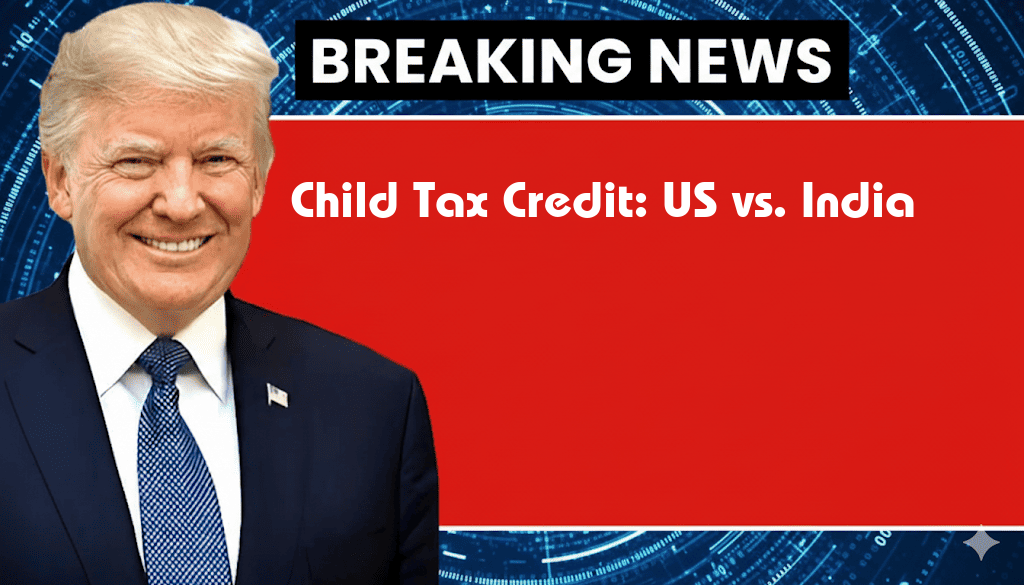The global landscape of child tax benefits is vast and varied, with different countries adopting distinct approaches to support families. In the United States, the federal government offers a $2,200 Child Tax Credit aimed at reducing the financial burden on parents. Meanwhile, India provides a substantial benefit of ₹1,65,000 (approximately $2,000) through various welfare schemes. This article explores the implications of these two different systems, their impact on families, and how they fit within each country’s broader social safety nets.
Understanding the Child Tax Credit in the United States
The Child Tax Credit in the U.S. was significantly expanded under the American Rescue Plan Act of 2021, providing families with up to $3,600 per child under the age of six and $3,000 for children aged six to 17. However, many families are still benefiting from the lower rate of $2,200, which has been the standard in previous years. This credit is designed to alleviate poverty and promote economic stability among families, especially in the wake of the COVID-19 pandemic.
Impact of the U.S. Child Tax Credit
- Helps reduce child poverty rates.
- Encourages spending on essential needs such as food and education.
- Offers financial relief, especially for low- to middle-income families.
The ₹1,65,000 Benefit in India
In India, the government provides a benefit of ₹1,65,000 as part of various welfare programs aimed at supporting families with children. This figure encompasses direct cash transfers and other social welfare schemes designed to improve living standards and reduce economic disparities. The Indian government has been steadily increasing its focus on child welfare, recognizing the importance of investing in future generations.
Components of the Indian Benefit System
- Direct cash transfers to families with children.
- Educational support programs, including scholarships and mid-day meal schemes.
- Healthcare initiatives aimed at reducing infant and maternal mortality rates.
Comparative Analysis of the Two Systems
| Criteria | United States | India |
|---|---|---|
| Benefit Amount | $2,200 | ₹1,65,000 (approx. $2,000) |
| Target Demographic | Low to middle-income families | Families with children across various income levels |
| Purpose | Poverty alleviation and economic stability | Child welfare and social equity |
Challenges and Considerations
Both countries face unique challenges in their implementation of child benefits. In the U.S., while the expanded Child Tax Credit has proven beneficial, debates surrounding sustainability and funding continue. Critics argue that without long-term solutions, the benefits may not be sustainable in the future.
In India, despite the generous benefits, issues of corruption, inefficiency, and unequal distribution hinder the effectiveness of support programs. Many families do not receive the intended benefits due to bureaucratic obstacles and lack of awareness about available schemes.
Conclusion
The comparison between the U.S. Child Tax Credit and India’s ₹1,65,000 benefit highlights a critical aspect of social policy: the necessity of adapting support systems to the unique economic and cultural contexts of each country. As both nations continue to develop their child welfare programs, the focus should remain on effectively reaching families in need and fostering a supportive environment for future generations.
For more information on child tax credits and benefits in different countries, you can visit Wikipedia on Child Tax Credit and Forbes Child Tax Credit Guide.
Frequently Asked Questions
What is the amount of the Child Tax Credit in the United States?
The Child Tax Credit in the United States is currently set at $2,200 per qualifying child.
How does the Child Benefit in India compare to the U.S. Child Tax Credit?
In India, the Child Benefit is approximately ₹1,65,000 per child, which can be compared to the $2,200 Child Tax Credit in the U.S.
Are there any eligibility criteria for the Child Tax Credit in the U.S.?
Yes, eligibility for the Child Tax Credit in the U.S. typically depends on factors such as income level, filing status, and the number of qualifying children.
What factors influence the Child Benefit amount in India?
The Child Benefit amount in India can be influenced by various factors, including family income, child age, and specific government policies.
How do the benefits in the U.S. and India support families?
Both the Child Tax Credit in the U.S. and the Child Benefit in India are designed to provide financial support to families, helping to reduce the cost of raising children and improve the overall well-being of families.

Leave a Reply